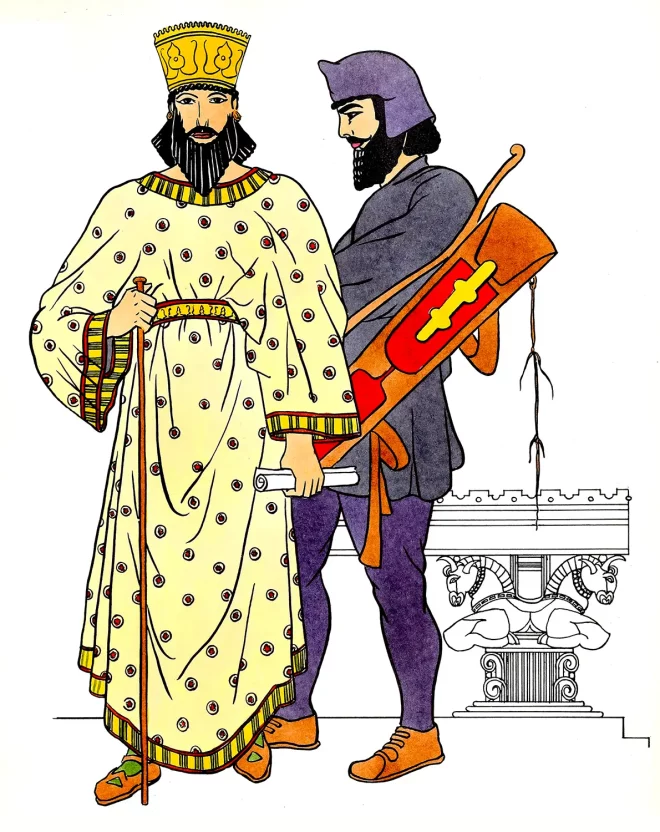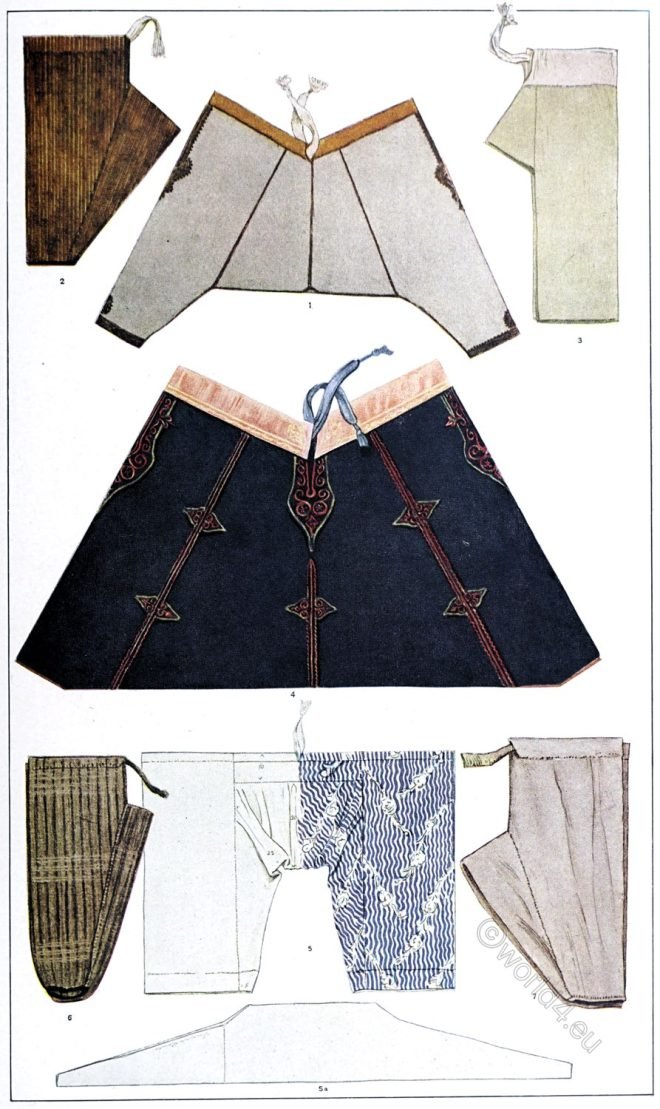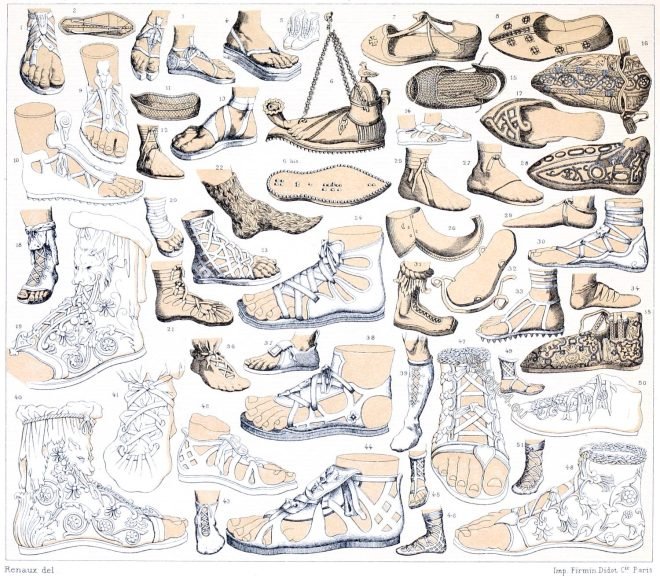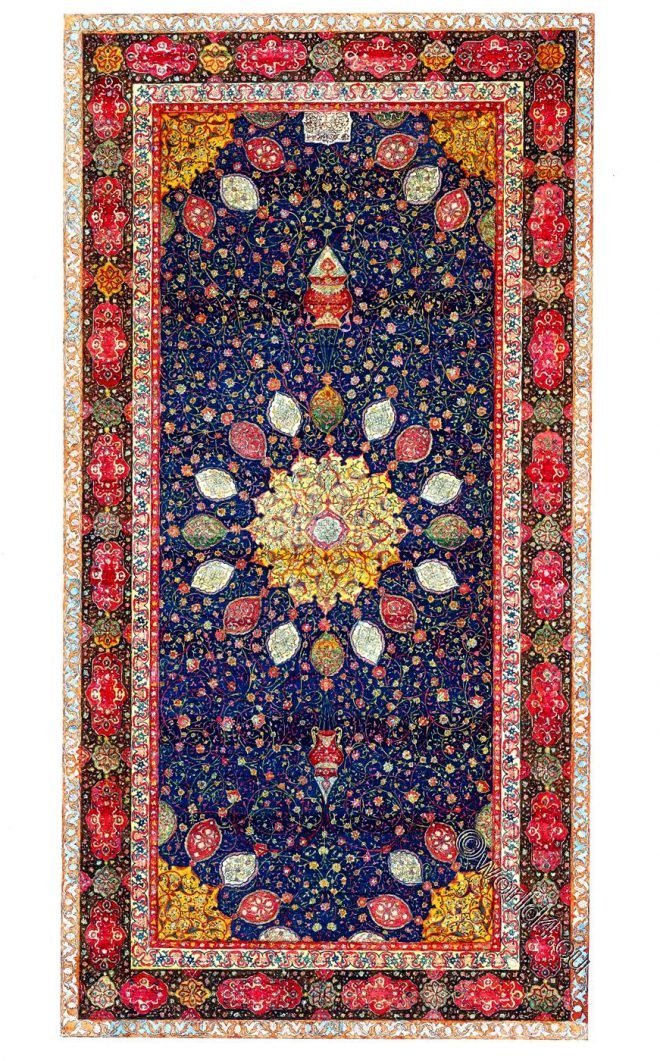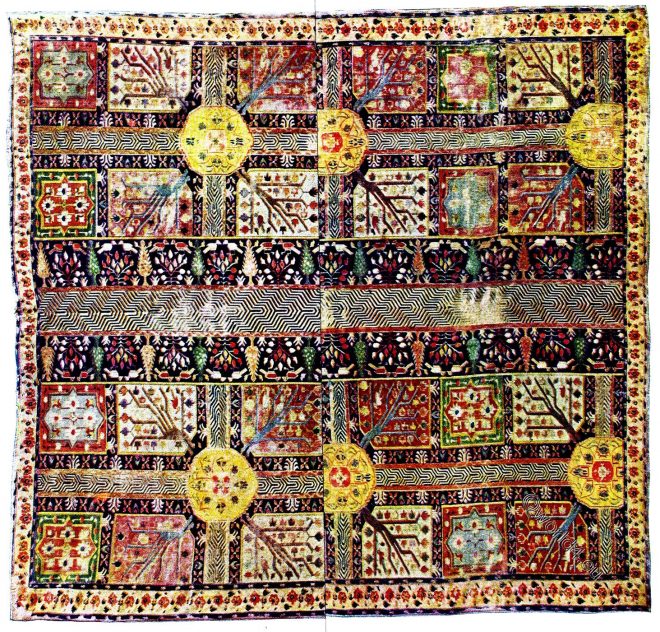The origin of the Corset. The Corset and the Crinoline.
Category: Persia
Iran. Persian costumes and clothing. Ancient to Middle ages until 19th century.
Costume of an ancient Persian king and his archer.
Costume history of the ancient world. Persian king and his archer.
Trouser shapes of Asia Minor. Turkey, Kurdish, Persian.
Trousers of a Kurdish leader. Turkish men’s trousers, Armenian women’s trousers, Persian men’s trousers.
Persian Shah Abbas or Ispahan Carpet in Vase design of the 17th century.
Among the few entire carpets of its kind known to exist is this vase design from South Persia, known by the names “Shah Abbas” and “Ispahan.”
Shoes of antiquity. Sandals, closed footwear of the ancient world.
Classical Antiquity. Footwear. Fashions and Customs. Calceus, Ocrea, Caliga, Campagus, Crepida, Solea, Pero, Ceremonial shoes, Runner’s boots, Lace-up shoe.
The floor of a mosque. Silk carpet made of antique Tabriz weave, Iran.
This interesting and valuable rug is of antique Tabriz weave, of finely blended colors and rare design.
A Royal Persian rug of the 15th century. Gift of the Persian Emperor.
Royal Persian. 15th century. THIS is probably as near perfection as the woolen carpet of the East has ever come.
Hunting scene of Sassanian Fabrics of the Middle Ages.
During the reign of the Sassanids, who ruled the Neo-Persian Empire from 250-650 AD and were distinguished by their love of luxury, the arts, especially those of weaving, reached a high level of perfection.
The Ardabil Carpet. Famous Iranian Persian Carpet.
The Ardabil carpet is a famous Iranian Persian carpet from the 16th century and at the same time the oldest carpet in the world with a specific year of manufacture.
Ancient garden design. A Persian Royal Garden Carpet of the 16th century.
A 16th century Persian Royal Garden Carpet. (Reputed to have been made for Shah Abbas the Great for Sefavi Palace.) Date 1587-1628


